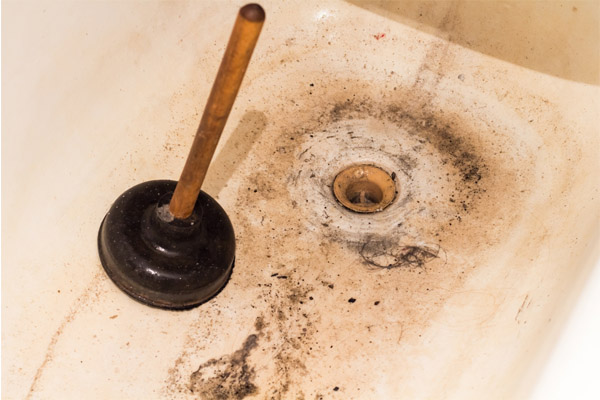Our Guide to Discharge Emergence in the Bathtub
Our Guide to Discharge Emergence in the Bathtub
Blog Article
The content below involving What To Do If Sewage Starts Backing Up Into the Shower is amazingly motivating. Give it a go and make your own personal conclusions.

Sewage back-up in the bath tub can be an upsetting and unhygienic trouble for any property owner. Not only is it inconvenient, yet it also presents serious health and wellness threats and indicates underlying issues with the plumbing system. Comprehending why sewage is showing up via the bath tub is essential for taking proper activity to address the problem efficiently.
Introduction to the Problem
Typical Reasons for Sewage Backup
Blockages in the Sewer Line
Among one of the most typical sources of sewer backup is a blockage in the sewer line. This can take place as a result of the accumulation of debris, grease, or foreign objects in the pipes, avoiding correct flow and causing sewage to back up into your bath tub.
Tree Origin Invasion
Tree roots seeking wetness and nutrients can penetrate sewer lines via small fractures or joints. In time, these origins can grow and increase, creating significant damage to the pipes and bring about sewer back-up issues.
Understanding the Issue
When sewer draws back up into the bath tub, it's a clear indicator of an issue with the drainage system. The wastewater that ought to be flowing away from your home is rather locating its way back into your living space, which can lead to considerable damage and health hazards.
Potential Reasons
Numerous elements can contribute to sewer back-up in the bath tub. From obstructions in the sewage system line to concerns with the plumbing framework, determining the origin is essential for locating an option.
Aging Infrastructure
Older homes might have outdated plumbing systems that are much more prone to corrosion, fractures, and degeneration. As pipes age, they come to be a lot more prone to leaks and blockages, increasing the possibility of sewer back-up cases.
Heavy Rainfall or Flooding
Throughout durations of heavy rainfall or flooding, the sewer system might come to be overloaded with excess water, triggering back-ups and overflows. This can lead to sewage supporting into bathtubs and various other fixtures inside the home.
Signs of Sewage Back-up
Foul Odors
Unpleasant smells emanating from drains or components, particularly in the washroom, may suggest sewage back-up issues. These smells are typically solid and relentless, signaling an issue that calls for instant focus.
Slow Draining Fixtures
Tubs, sinks, and commodes that drain slowly or not in any way could be experiencing sewer backup. If multiple fixtures are impacted simultaneously, it's likely that the problem originates from an usual factor, such as the main drain line.
Gurgling Noises
Weird gurgling or bubbling sounds coming from drains pipes when water is running somewhere else in your house are a measure of air entraped in the plumbing system. This air build-up can result from sewer back-up and need to be explored quickly.
Health Risks Associated with Sewage Back-up
Contamination of Supply Of Water
Sewage backup can pollute the water system in your house, presenting a severe wellness danger to you and your household. Exposure to contaminated water can result in stomach issues, skin infections, and other health problems.
Mold and mildew Growth
Dampness from sewage back-up can create optimal conditions for mold growth in your house. Mold spores can exacerbate breathing troubles and create allergies in sensitive individuals, making prompt cleaning essential.
Spread of Illness
Sewage contains hazardous microorganisms, viruses, and bloodsuckers that can trigger a range of illness, including hepatitis, cholera, and gastroenteritis. Coming into contact with sewer or polluted surfaces puts you in jeopardy of infection.
Tidying up After Sewage Backup
Sanitation Procedures
Extensively sanitize and sanitize affected locations after sewer back-up to get rid of hazardous germs and protect against mold and mildew growth. Use ideal cleaning products and protective gear to make sure risk-free and effective clean-up.
Repair of Affected Locations
Repair any damages to floor covering, wall surfaces, or components triggered by sewer backup. Depending on the degree of the damage, you may require to replace carpets, drywall, or various other products to recover your home to its pre-loss problem.
Immediate Actions to Take
Switching Off Water
In case of sewer backup, it's necessary to turn off the water supply to stop additional contamination and damage. Locate the major water shutoff valve in your home and closed it off up until the issue can be resolved.
Speaking To an Expert Plumber
Handling sewer backup is not a do it yourself job. Call a certified plumber with experience in handling sewage-related problems to analyze the circumstance and execute required fixings or cleanups.
Preventing Contact with Infected Water
Until the sewage backup is solved, stay clear of contact with contaminated water to prevent the spread of germs and microorganisms. Use protective equipment if you need to be in the afflicted location and clean your hands extensively afterward.
Preventive Measures
Routine Upkeep of Sewage System Lines
Schedule routine examinations and upkeep of your sewer lines to identify and resolve possible problems before they rise into significant issues. This can include cleaning out particles, evaluating for tree root intrusion, and fixing any type of damaged pipelines.
Setting Up Bayou Valves
Consider mounting bayou shutoffs in your plumbing system to prevent sewer from flowing back into your home throughout periods of heavy rainfall or flooding. These shutoffs automatically close when water draws back up, protecting your property from contamination.
Appropriate Disposal of House Waste
Avoid flushing anything apart from toilet paper and human waste down the bathroom to avoid obstructions and clogs in the sewer line. Dispose of grease, oil, and other home chemicals correctly to minimize the threat of plumbing problems.
Why Is Water Backing Up in My Bathtub When I Flush My Toilet?
What to do about a sewer line clog
First, don’t bother with plunging. No amount of plunging will dislodge the clog in a sewer line. The clog is too far away. Plungers are for clogs in the toilet itself, not the sewer line. Plus, the most likely causes of a sewer clog are:
Tree roots Flushed toys or feminine products Grease buildup Those items don’t move easily. And in the case of tree roots, the roots need to be cut out of the pipe and the pipe will need to be repaired.
You’ll need a closet auger. A closet auger is a type of plumber’s snake with a protective cover to keep from scratching the delicate porcelain toilet. If the clog is further down, you may need to remove the toilet or use one of your cleanouts to get to the clog.
We also recommend doing a video inspection of the drain to ensure that the cause of the clog has been completely removed. Otherwise, you could have the same problem again in a few days or weeks.
https://mspplumbingheatingair.com/blog/why-is-water-backing-up-in-my-bathtub-when-i-flush-my-toilet

As a fervent reader about Why sewage is coming up through your bathtub, I figured sharing that section was a great idea. Enjoyed reading our blog entry? Please quickly share it. Let others find it. I appreciate reading our article about Water Coming up Bathtub Drain.
Free Quote
Report this page